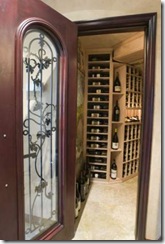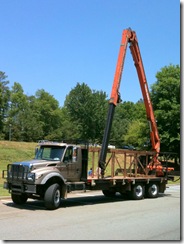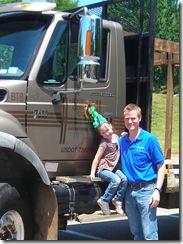What standards have you lowered in your business and life since 2006? How have you had to change your services or offerings from what they used to be? What are you doing now that you wouldn’t have done five years ago?
At Herbert Construction Company, we are constructing foundations for additions –something we worked hard to get away from between 2001 and 2006. Now, we gladly accept those projects and thank our clients for the work.
| “…when it comes to right and wrong, there is still a set of standards that must endure – regardless of the economy.” |
A builder friend of mine told me he installed a few mailboxes recently. In year’s past, he wouldn’t have taken on this kind of work – let alone do the work himself. Many of my Trade contractor friends have gone from doing strictly new home construction to performing in-home services for homeowners.
While we’ve modified our project standards for the types of work we’ll take on, we will not compromise our ethical standards - no matter how bad the economy gets. I believe a person can modify what they will do, as long as it is in line with their ethical and moral standards.
We recently turned down a job that was not in line with our ethical standards. It was a large house foundation along with a free-standing retaining wall. A nice, big job. We had a gap in our schedule so the timing of the job was perfect. We’d completed our CAD plan for the project and were all set to begin.
However, when we went to lay out the footings, the client insisted that we put the concrete retaining wall near the property line and dangerously close to a dirt bank. The dirt bank had already caved in at multiple places along the excavated area. More cave-ins were guaranteed. To make matters worse, boulders had been placed above the dirt bank, adding unstable overburden weight to the bank.
To put our men that close to that dirt bank would have been very, very dangerous.
So, I met him on the site and explained how dangerous the situation was. I suggested four different solutions to the problem.
He insisted that the wall be placed in the same location and I told him we’d like to help him out, but we couldn’t put it there. I explained that it would be very dangerous to our employees. I felt certain there would be more cave-ins.
In a scenario like this, the biggest danger is while we are stripping the forms after the wall has been poured. A person can get pinned between our new, immovable wall and the falling dirt bank. Our men have families they need to go home to every night. I won’t ask them to put their lives in danger.
Our client was unmoved (unlike the dirt falling from the bank). We parted ways. I imagine he was able to get a desperate concrete contractor to do the job. Overdue mortgage payments will make some men do bad things. For others, it won’t.
During these tough times, it may be tempting to cut corners or accept jobs and situations that none of us would have accepted five years ago. However, when it comes to right and wrong, there is still a set of standards that must endure – regardless of the economy.
I’d like to hear what you have to say. What projects have you taken on that you wouldn’t have done in the past? Have you had to turn down projects that weren’t in your best interest, or were out of line with your standards? Let me know what you think by dropping me an email at Doug@HerbertConstruction.com.
Note: For a few over-the-top examples of things you just shouldn’t do, check out our International Redneck Engineering Awards on the back page.
Take care,






![clip_image002[5] clip_image002[5]](http://lh4.ggpht.com/-3Uv8s-gZZ9U/Td5uCxh26HI/AAAAAAAAAos/8AOxtrOOLRw/clip_image002%25255B5%25255D_thumb%25255B8%25255D.jpg?imgmax=800)
![clip_image002[7] clip_image002[7]](http://lh4.ggpht.com/--MgLGDNEdr4/Td5uDzfibzI/AAAAAAAAAo0/qc_GiBwZ3BI/clip_image002%25255B7%25255D_thumb%25255B28%25255D.jpg?imgmax=800)
![clip_image002[9] clip_image002[9]](http://lh5.ggpht.com/-fpja5zBzL5Q/Td5uF9_TmsI/AAAAAAAAAo8/uf2XG1YEebw/clip_image002%25255B9%25255D_thumb%25255B9%25255D.jpg?imgmax=800)



![clip_image002[4] clip_image002[4]](http://lh4.ggpht.com/-q4hS4ISwIFM/Td5dlt6rxhI/AAAAAAAAAnk/zNc3G12x6Co/clip_image002%25255B4%25255D_thumb%25255B2%25255D.jpg?imgmax=800)
![clip_image002[8] clip_image002[8]](http://lh6.ggpht.com/-wspOqtIYQok/Td5dmzasirI/AAAAAAAAAns/EGmI7F3aFLs/clip_image002%25255B8%25255D_thumb.jpg?imgmax=800)
![clip_image002[10] clip_image002[10]](http://lh3.ggpht.com/-FrHEW00hvIw/Td5dntdW_MI/AAAAAAAAAn0/nQjZYJHXYQQ/clip_image002%25255B10%25255D_thumb.jpg?imgmax=800)